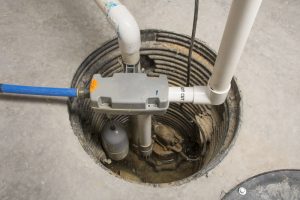 As evidenced by our latest tropical storm, weather in the Northeast can be tough to manage. There is nothing that we can do to make the rain stop coming. There is nothing we can do to prevent rapid snowmelt and the mess that comes with it. What we can do is install a great sump in your home. If you aren’t using a sump pump in Southern Vermont, then you are honestly just asking for trouble! Or, at least, inviting it into your home.
As evidenced by our latest tropical storm, weather in the Northeast can be tough to manage. There is nothing that we can do to make the rain stop coming. There is nothing we can do to prevent rapid snowmelt and the mess that comes with it. What we can do is install a great sump in your home. If you aren’t using a sump pump in Southern Vermont, then you are honestly just asking for trouble! Or, at least, inviting it into your home.
Why do that, when our plumbers are here to serve you? We install sump pumps of the highest quality. We make sure that they can live up to their potential, too. How? By offering services of the highest quality, as well. When you need your sump to jump into action, it’s never a matter of “good enough.” So keep this information in mind, evaluate your situation, and let us know if you are ready to explore your sump pump and service options.
How Does a Sump Pump Work?
A sump pump is not a very complicated piece of machinery. It really is just a pump. One that is installed—in a sump pit. See where the name comes from?
Now, don’t let that general simplicity fool you. A sump pump is an indispensable piece of equipment in this part of the country. And it is one that needs to be installed professionally.
A sump pump sits in the sump pit, and that pit has to be excavated at the lowest point of your home. This is typically right into the concrete slab upon which the home is constructed.
That pit is always going to hold some water. However, a float switch on the pump will activate once that water level rises to the activation point.
When that happens, the pump cycles on. It then continues to pump water out of the pit until the float switch is back in the safe zone, above the water level.
Simple, right? Sure—as long as you’ve got our team making sure everything works as it should!
What Are My Options?
There are two general types of sump pumps: pedestal pumps and submersible pumps. There are a lot of subvariants in those two categories, but that’s typically the starting point.
- Pedestal pumps sit upon a pedestal that keeps the pump mechanism itself above the water line. These are ideal for smaller sump pits. They’re a bit noisier than submersible models, but they are very easy to access when service is needed (infrequent as that may be).
- Submersible pumps are installed down below the water line. That dampers noise and also helps to keep the pump cool. These do require larger pits for installation but are generally recommended where possible.
One last tip—if you have a sump pump now, or have one installed, test it regularly. Your sump pump won’t be active all that much, hopefully. Take a 5-gallon bucket, fill the pit to the activation point, and make sure that your sump pump is ready for action when it is needed.
Contact HB Energy Solutions for all your energy needs. HB Energy Solutions delivers peace of mind.


Join Us Online